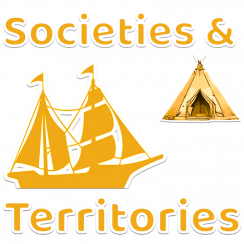The fur trade
Around 1645, Indigenous peoples were at the heart of the colony’s main economic activity, the fur trade. Indigenous peoples hunted animals like beaver and otter and cleaned the skins. They also wore the fur they made for a while. This increased its value because the fur became more resistant and silky over time. Without these important steps, it would have been very difficult for the French to make any profits from the fur trade. As time passed, the colonists learned how to hunt beaver, and so they did less and less business with Indigenous peoples.
A threatened culture
Although Indigenous peoples were still an important group in New France, their ways of life were being threatened. Firstly, many of them were dying from diseases that had been brought over by the Europeans. What’s more, the fur trade was changing their traditional way of life because the men had to leave their families for several days at a time to go hunting. Lastly, some Indigenous peoples were converted from traditional Indigenous spiritual beliefs to the Catholic religion of the French. Indigenous ways of life were indeed changing.
Author: Alexandre Lanoix. Adaptations by LEARN.And links:
- The fur trade / New France around 1645





